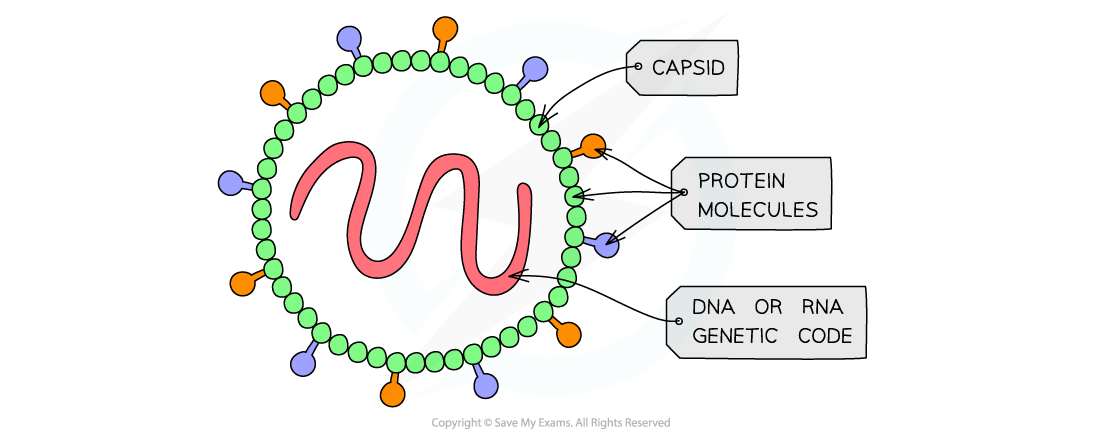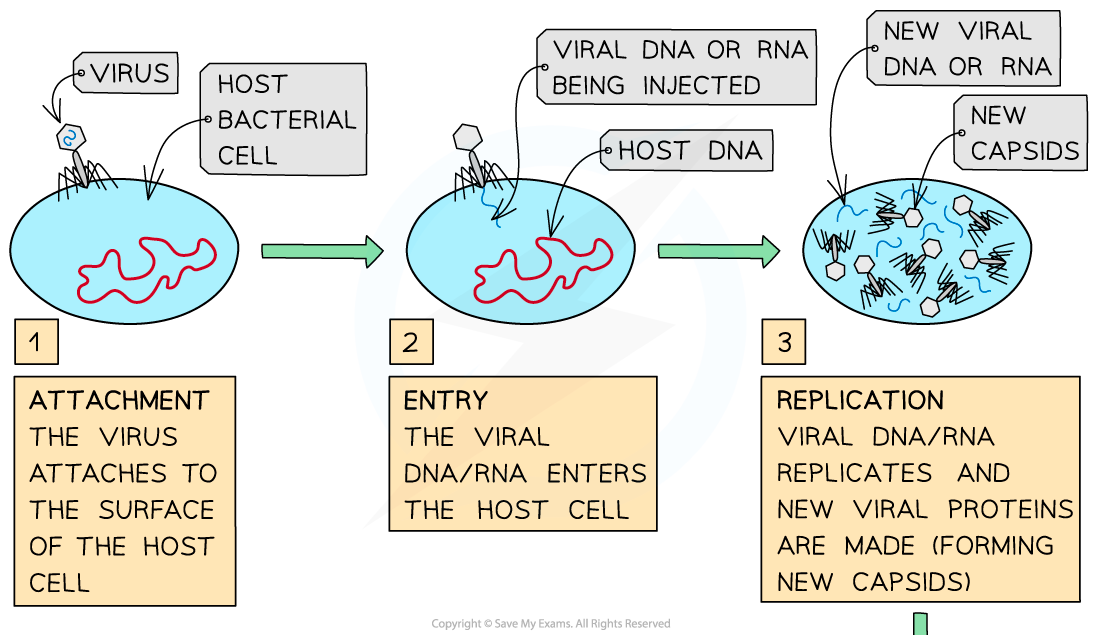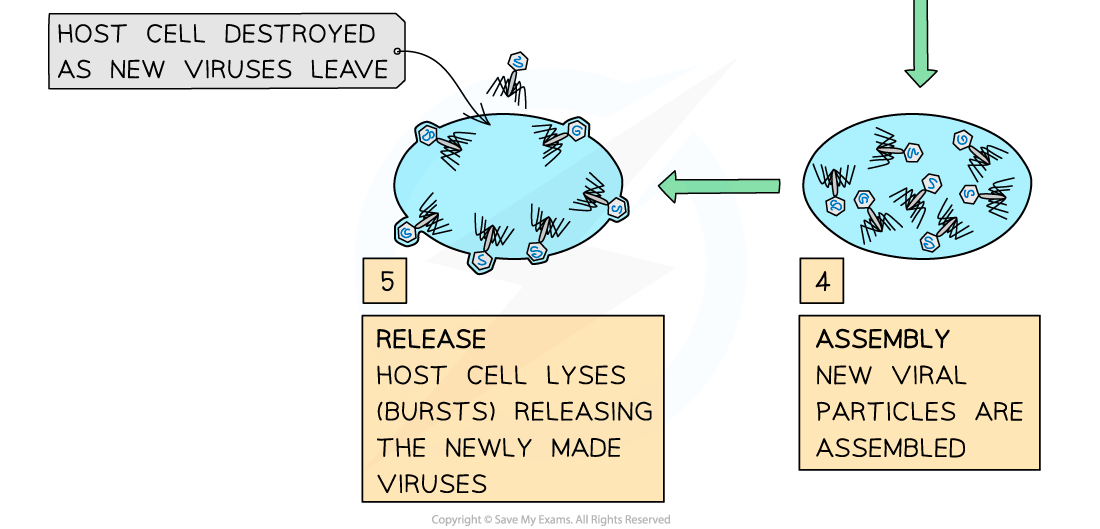- 翰林提供学术活动、国际课程、科研项目一站式留学背景提升服务!
- 400 888 0080
AQA A Level Biology复习笔记2.3.9 Viral Particle Replication
Viruses Do Not Undergo Cell Division
- Viruses are non-cellular infectious particles that straddle the boundary between ‘living’ and ‘non-living’
- They are much smaller than prokaryotic cells
- They are typically between 20 and 300 nm in diameter
- For example, the Human Immunodeficiency Virus (HIV) is about 100 nm (0.1 µm) in diameter
- Viruses are relatively simple in structure
- Unlike prokaryotic cells, they do not have a plasma membrane, cytoplasm or ribosomes
- Structurally they have:
- A nucleic acid core (their genomes are either DNA or RNA, and can be single or double-stranded)
- A protein coat known as a ‘capsid’
- Some viruses have an outer layer known as an ‘envelope’ formed usually from the membrane-phospholipids of a cell they were made in

Viruses are not cellular like prokaryotes and eukaryotes – this is an example of a typical structure of a virus
Viral replication
- Being non-living, viruses do not undergo cell division
- All viruses are parasitic, meaning they can only reproduce by infecting living cells (known as host cells)
- Viruses replicate by injecting their nucleic acid into a host cell:
- First, a virus uses attachment proteins on its surface to bind to complementary receptor proteins on the surface of a host cell
- The virus then injects its DNA or RNA into the host cell
- The host cell then uses its nucleic acid and protein-building machinery (ribosomes) to produce new viral particles
- Eventually, the new viral particles are released. This may occur when:
- The host cell bursts open, releasing all the new viral particles at once
- Viral particles leave individually through the host cell membrane via a process known as ‘budding’, often taking a section of the membrane with them (this is the ‘envelope’ that surrounds some viruses)
- The exiting of viruses damages their host cells, causing disease
- For example, HIV infects cells of the immune system (such as helper T cells and macrophages)
- When the newly replicated HIV particles exit, these host cells are destroyed
- Over time, the immune system becomes severely compromised and this eventually leads to Acquired Immunodeficiency Syndrome (AIDS)


The process of viral replication - in this case, the virus is a bacteriophage (a virus that infects specific prokaryotic host cells)
Exam Tip
Different viruses have different attachment proteins and therefore can only bind to specific host cell types that have the correct (complementary) receptor proteins. For example, some viruses use prokaryotic host cells, whilst others use eukaryotic animal or plant host cells. In addition, some viruses can only infect one specific cell type, whereas others can infect many different cell types.
转载自savemyexams

最新发布
© 2025. All Rights Reserved. 沪ICP备2023009024号-1









